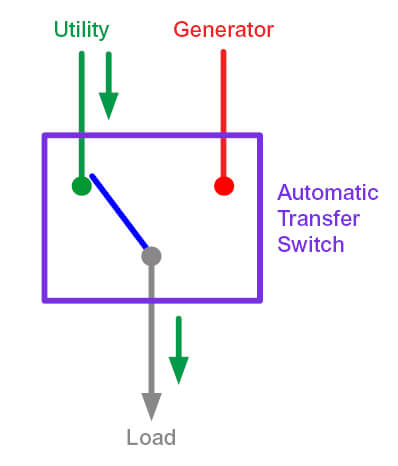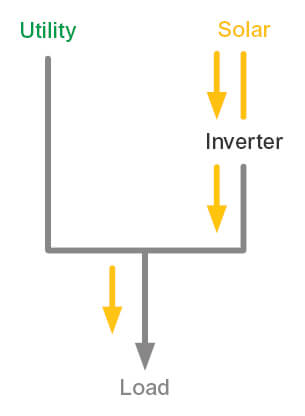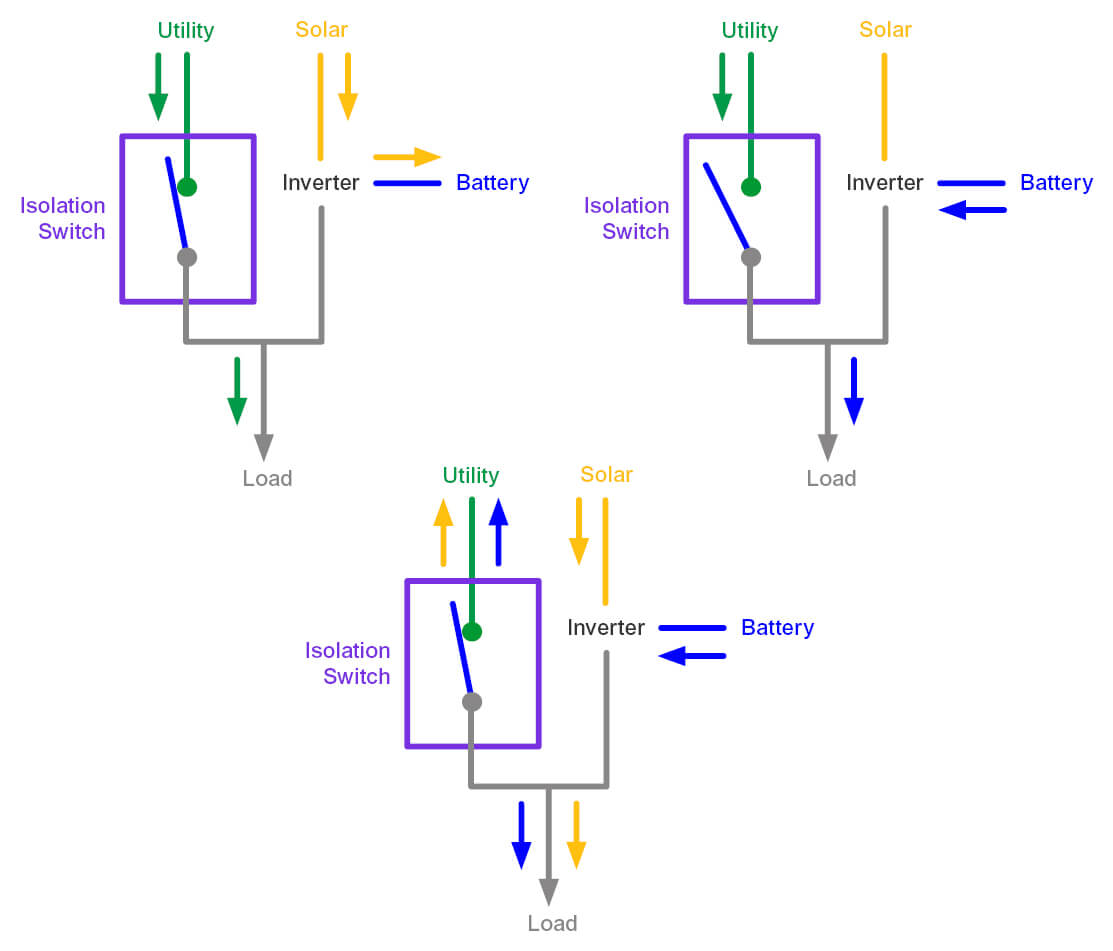Historically, resilience was the primary reason for using hydrocarbon-fueled generators to provide on-site emergency power. But growing needs for economy and sustainability will cause Battery Energy Storage Systems to play a greater role in facility power strategies. This article surveys how battery systems can improve power resilience, sustainability, and costs.
The Need and Opportunity to Improve Facility Power Systems
To meet emerging environmental and energy challenges, facilities need to increase power resilience and reduce the environmental impacts resulting from their operations. Three circumstances together now provide opportunities for improving power systems:
- Codes and Standards: Climate change and environmental concerns have come to the forefront of societal needs. To limit global warming, public policy will be increasingly directed at avoiding pollution from energy generation and improving the efficiency of power usage. For instance, California’s Title 24 Building Energy Efficiency Standards will soon require new commercial buildings exceeding 5000 square feet (~465 square meters) to install photovoltaic panels and energy storage systems. This type of legislation is expected to become increasingly common in the New Energy Landscape.
- Sustainability: Climate change and other environmental concerns have come to the forefront of societal needs. To limit global warming, many governments and most major corporations are implementing programs to improve sustainability. As this article will explain, energy storage will enable facilities to benefit from sustainable power solutions more fully.
- Public Funding: In response to both the COVID pandemic and inflationary pressures, governments have made funding available to improve infrastructure and facilities. For instance, in the United States, economic stimulus initiatives have made public funds and tax incentives available for improving power resilience and sustainability. Similar programs have been implemented in other regions of the world.
Any or all of these drivers will increase the deployment of Battery Energy Storage Systems (BESS) and distributed power sources. The following sections show how battery storage will play a key role in transforming facility power systems.
Routine Operation in Facilities without Batteries
For more than 100 years, electricity has been supplied to end-users by central power plants that send electricity through a regional power grid to utility distribution systems and on to end users. This model of unidirectional power transmission provided mass-produced power for uses and applications that are still expanding today.
One advantage of the unidirectional power flow model was that its scale made power widely available at a reasonable cost. One disadvantage is that this grid power can be disrupted by a variety of causes including extreme weather events, a circumstance exacerbated by aging infrastructure requiring expensive upgrades. Where operations could not tolerate power disruptions, end users have traditionally installed backup power sources at their facilities, most often powered by petroleum-fueled, internal combustion engines. Figure 1 shows a typical arrangement in its normal operating mode.
 Figure 1
Figure 1
In legacy applications, power flowed in one direction from Utility to Load.
A generator and a transfer switch provided resilience during utility outages.
Alternate Power Sources
Two types of changes are affecting the unidirectional power distribution model. One is a need for increased resilience, resulting from both aging power infrastructure and
more frequent extreme weather events. A second challenge is reducing emissions from power generation to avoid impacts that would further promote climate change.
There are several available means for reducing emissions from power generation. One is to increase the efficiency of facilities and their loads. This will decrease the amount of power required from fossil-fueled sources, and reduce emissions by a corresponding amount. A second means is to install “cleaner” power sources … wind and solar-powered sources offer carbon-neutral alternatives to conventional power generation means.
At grid scale, both wind and solar sources are being deployed. At end-use facilities, carbon-free sources are being installed at or near the site of power consumption. In these prosumer applications, photovoltaic panels are the typical alternate power source. Figure 2 shows a simplified arrangement involving solar panels, which produce dc power, and an inverter that converts that power to alternating current. Hypothetically, a facility using this arrangement could access backup power while avoiding the fuel usage and air emissions of conventional generator systems.
 Figure 2
Figure 2
Using a carbon-neutral energy source to replace some or all utility power could increase sustainability, but can only occur during suitable environmental conditions. However, even if the solar source is sized to carry the full nominal load, it is unlikely to provide the starting currents required for an application.
In practice, the conceptual arrangement in Figure 2 presents multiple impracticalities. First, the solar source will produce power only during daylight hours and will achieve maximum performance only under clear skies, often at times of off-peak demand. Second, sizing photovoltaic arrays to power total facility loads requires space that can exceed available rooftop and ground surface areas. Third, even if sized to provide the entire nominal load, these systems typically cannot produce current at the multipliers required to start certain load equipment. An adequate solution requires backup power to be available at any time in sufficient capacity.
Batteries in Backup Power Systems
To realize the full benefits of solar power, a means is needed to store excess energy when it is available and supply it for later consumption. Batteries can time-shift the availability of green power by providing this storage function. Battery systems can be configured to support total facility load for a specific amount of time and to provide currents needed to start inductive loads. Adding a BESS to the conceptual arrangement above yields the diagrams in Figure 3 below.
 Figure 3
Figure 3
If a battery is added, it could be charged when solar power is available while a facility
operates on utility power. Stored energy would become available when a utility outage occurred.
At times when surplus solar power becomes available, or when stored battery power is needed
for utility operations, power would flow from the facility to the utility grid.
Figure 3 shows three operating modes. At left, the utility source supplies power to loads while a solar array charges a battery system. The stored energy will later make power from the carbon-free source available to loads when needed. If a facility’s battery is used to supply power during utility outages, a means of isolating the power system from the utility grid must be provided, one that offers the same robustness provided by transfer switches such as those listed to UL 1008. An isolation switch is shown in each diagram in Figure 3.
In the center diagram, a facility is isolated from the grid during a utility outage, and battery power is used as the backup source.
In practice, the operating modes for these systems will likely change according to real-time conditions, with the inverter playing a controlling role. Using advanced electronic controls, a “smart inverter” could direct power from either power source to battery or from either source to load, as shown in the right-hand diagram in Figure 3. It could also provide for bidirectional power flow between the facility and its utility provider. Provided with paralleling capability and appropriate safeguards, the inverter could also direct power from both sources to the load simultaneously. These arrangements would reduce the consumption of utility power and thus the amount of pollution produced by power plants, indirectly reducing the carbon footprint of the end-use facility. They could also result in financial compensation to the end-user from the utility for any power supplied to the grid.
Where there is authorized utility-directed control, stored energy from the battery could be directed to the grid during periods of high demand. Facilities that can provide stored power back to the grid can help a utility reduce the use of reserve generation capacity such as “peaker” plants, further avoiding emissions to the atmosphere and increasing sustainability. In addition, the proliferation of electric vehicles could make additional battery capacity available using “vehicle-to-grid” technologies. Incorporating vehicle battery systems into facility-directed or utility-directed power strategies could increase the effectiveness of energy management solutions at times when vehicles will not be driven.
While battery storage enables bidirectional power flows that benefit the environment, stored power is also beneficial to facility operations. Whereas a diesel generator solution requires seconds to minutes to connect acceptable backup power, a charged battery can supply power as soon as a facility is disconnected from the utility grid. For example,
Uninterruptible Power Supplies can supply power to loads on the order of ~5 milliseconds, and conventional backup generators can provide acceptable power in less than 10 seconds. Battery systems do not need to start an engine and ensure its proper output, and thus will likely make backup power available more quickly than conventional generator solutions. In addition, solar power is carbon-free and requires no fuel, reducing operating costs.
Why Many Facilities Will Continue to Need Generators
A limitation of batteries is that they store finite amounts of energy. Consequently, the amount of time that a battery solution can support facility operations will depend on the capacity of the BESS and actual facility power demand during a utility outage. For example, installing solar according to the requirements of California’s Title 24 requirement will provide several hours of runtime. However, a hydrocarbon-fueled generator set can supply power for as long as it can be refueled. Consequently, there are multiple circumstances where facilities will require a conventional emergency generator:
• Where an end-user cannot tolerate a utility outage lasting beyond the duration of its BESS
• Where required by building or energy efficiency codes such as California’s Title 24
• Where minimum runtimes are specified by codes such as:
- NFPA 110 - Standard for Emergency and Standby Power Systems
- National Electrical Code® (NEC®) Article 700 – Emergency Systems
- National Electrical Code® (NEC®) Article 701 – Legally Required Systems
- NEC Article 708 – Critical Operations Power Systems
- NFPA 99 – Health Care Facilities Code
Increasing Generator Efficiency and Power Sustainability
Using a BESS can eliminate the need to use a generator for outages lasting less than the reserve time of the battery system. For longer utility outages, a BESS can reduce the runtime of a generator by the duration of its battery reserves. Where grid power is relatively stable and reliable, 30-minute generator test events can comprise the majority of generator run-time. If a sufficiently discharged BESS is present, it could be used to load a generator for testing and the recovered energy could be reused. If the “round trip” charge/discharge efficiency of the battery system is 80 percent, then the facility could nominally recover 80 percent of its testing fuel costs and reduce its hydrocarbon emissions accordingly. For these reasons, facilities equipped with a BESS and a conventionally fueled generator will commonly employ a “battery first” power strategy. Using a diesel fuel alternative such as natural gas, biofuel, or hydrogen to power a genset driven by an internal combustion engine can further reduce a facility’s carbon footprint.
Closing
By itself, an on-site solar array can provide economic and sustainability advantages. However, because a solar source cannot operate at all times, it cannot provide power resilience. Adding a battery solution provides resilience by time-shifting the availability of solar power so that it can be used at any time until the charge is exhausted.
Resilience beyond the available runtime for a BESS will most often be provided by a generator set powered by a reciprocating internal combustion engine. Using this solution, facilities can pursue economic and sustainability milestones without compromising the resilience needed for mission-critical operations.





